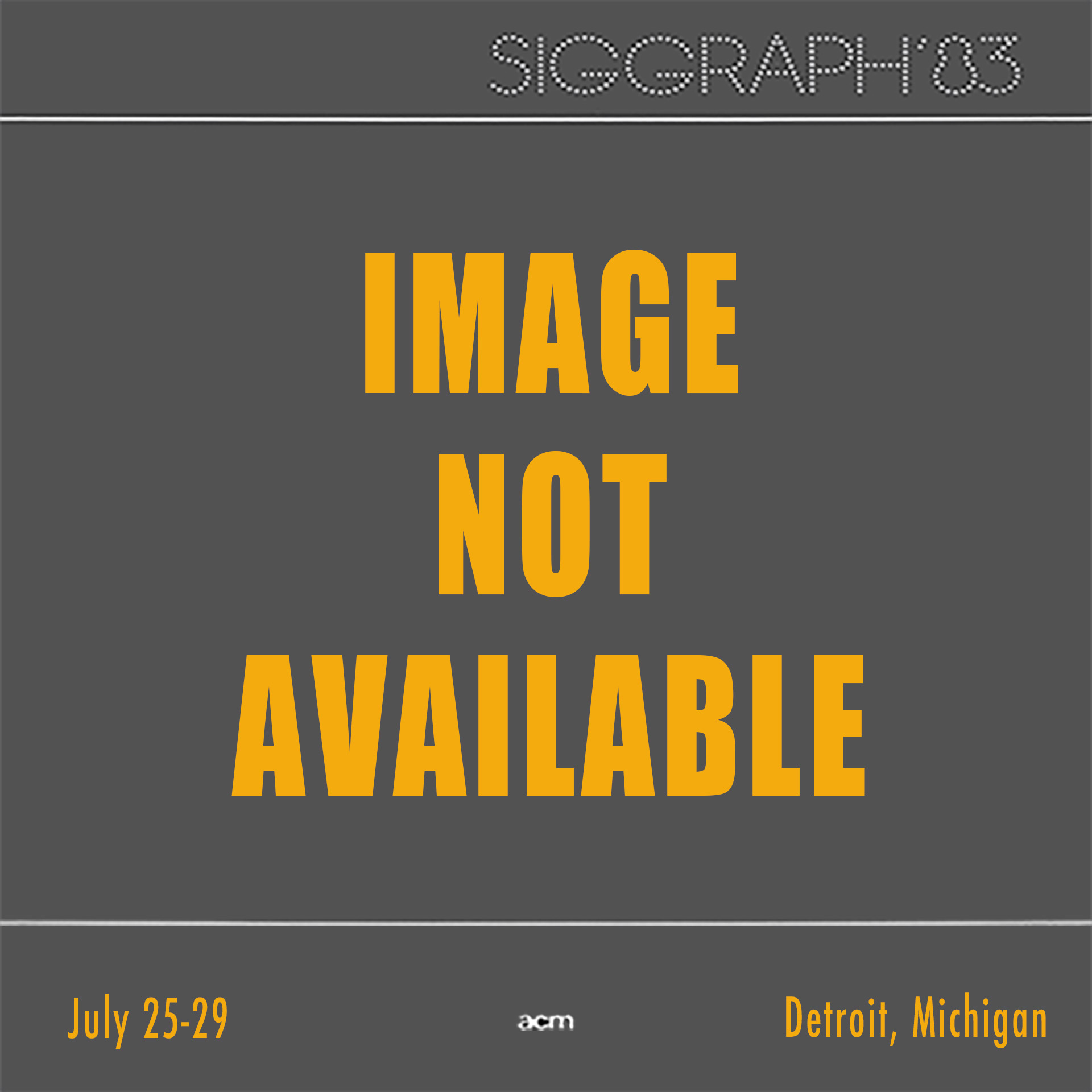“Modeling motion blur in computer-generated images” by Potmesil and Chakravarty
Conference:
Type(s):
Title:
- Modeling motion blur in computer-generated images
Presenter(s)/Author(s):
Abstract:
This paper describes a procedure for modeling motion blur in computer-generated images. Motion blur in photography or cinematography is caused by the motion of objects during the finite exposure time the camera shutter remains open to record the image on film. In computer graphics, the simulation of motion blur is useful both in animated sequences where the blurring tends to remove temporal aliasing effects and in static images where it portrays the illusion of speed or movement among the objects in the scene. The camera model developed for simulating motion blur is described in terms of a generalized image-formation equation. This equation describes the relationship between the object and corresponding image points in terms of the optical system-transfer function. The use of the optical system-transfer function simplifies the description of time-dependent variations of object motion that may occur during the exposure time of a camera. This approach allows us to characterize the motion of objects by a set of system-transfer functions which are derived from the path and velocity of objects in the scene and the exposure time of a camera.
References:
1. Andrews, H. C. and Hunt, B. R., Digital Image Restoration, Prentice Hall Inc., New Jersey, 1977
2. Blinn, J., F., “Systems Aspects of Computer Image Synthesis and Animation”, SIGGRAPH 1982 Tutorial Notes
3. Dainty, J. C., and Shaw, R., Image Science, Academic Press, New York, 1974
4. Goodman, J. W., Introduction to Fourier Optics, McGraw-Hill, Inc., New York, 1968, Chapter 4,5
5. Newell, M. E., Newell, R. G., and Sancha, T. L., “A New Approach to the Shaded Picture Problem”, Proceedings of the ACM National Conference, 1972
6. Potmesil, M. and Chakravarty, I., “A Lens and Camera Model for Synthetic Image Generation”, ACM Computer Graphics (Proc. SIGGRAPH 1981), 15, (3), 297-305, August 1981
7. Potmesil, M. and Chakravarty, I., “Synthetic Image Generation with a Lens and Aperture Camera Model”, ACM Transactions on Graphics, 1, (2), 85-108, April 1982
8. Pratt, W. K., Digital Image Processing, Wiley-Interscience, New York, 1978
9. Reynolds, C. W., “Computer Animation with Scripts and Actors”, ACM Computer Graphics (Proc. SIGGRAPH 1982), 16, (3), 289-296, July 1982
10. Roth, S., “Ray Casting for Modeling Solids”, Computer Graphics and Image Processing, 18, (1), 109-144, January 1982
11. Sawchuk, A. A., “Space-Variant Image Motion Degradations and Restorations”, Proc. IEEE, 60, (7), 854-861, July 1972
12. Sawchuk., A. A., “Space-Variant Image Restoration by Coordinate Transformation”, JOSA, 64, (2), 138-144, February 1974
13. Shack., R. V., “The Influence of Image Motion and Shutter Operation on the Photographic Transfer Function”, Applied Optics, 3, (10), 1171-1181, October 1964
14. Shelley., K. L., and Greenberg, D. P., “Path Specification and Path Coherence”, ACM Computer Graphics (Proc. SIGGRAPH 1982), 16, (3), 157-166, July 1982
15. Whitted., T., “An Improved Illumination Model for Shaded Display”, Comm. ACM, 3, (6), June 1980, 343-349





